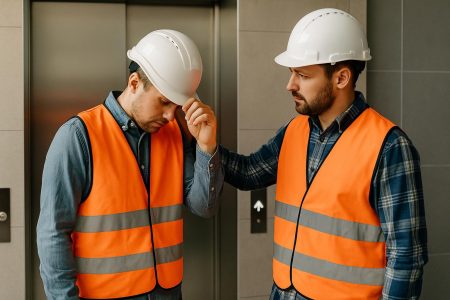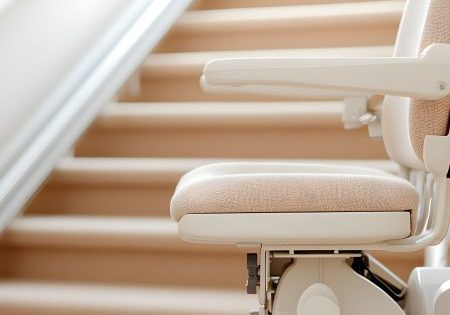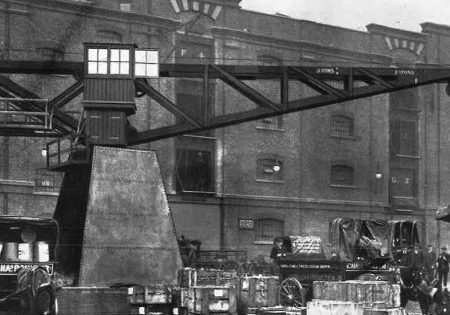Elevating Mental Health
Sep 1, 2025

Rethinking safety to include another pressing issue
by Dot Mynahan
The elevator industry has long prioritized physical safety — from rigorous training to strict adherence to codes and standards. But a quieter, more insidious threat has emerged as one of the most pressing safety issues of our time: suicide and mental health crises among workers.
A Hidden Crisis in Plain Sight
Construction and skilled trades, including elevator constructors, face some of the highest suicide rates of any profession. Long hours, physically demanding work, job insecurity and exposure to trauma contribute to chronic stress. Compounding these challenges is a culture that often values toughness over vulnerability, leaving many workers to suffer in silence.
According to the Centers for Disease Control and Prevention, while approximately 1,000 construction workers die annually from workplace-related injuries, more than 6,000 die by suicide — a staggering figure that underscores the urgency of addressing mental health as a core component of workplace safety.
Mental Health First Aid: A Groundbreaking Initiative
Recognizing this need, the Elevator Industry Work Preservation Fund (EIWPF), under the leadership of National Director Allen Spears, launched a pioneering Mental Health First Aid (MHFA) program. Inspired by a simple but powerful question — “We already receive CPR and medical first aid training; why don’t we have mental health first aid training?” — the program was developed to equip elevator constructors, contractors and management with the tools to recognize and respond to mental health crises.
Led by EIWPF National Coordinator and OSHA Master Instructor Matt Rusch, the MHFA program is tailored specifically for the elevator industry. It is the result of collaboration among the EIWPF OSHA Team, the International Union of Elevator Constructors (IUEC), the National Elevator Industry Educational Program (NEIEP) and the National Elevator Industry Benefits
Program (NEIBP). The program aims to normalize conversations around mental health, reduce stigma and ultimately save lives.
Rethinking Safety To Include Mental Health
After seeing the social media posts by the EIWPF regarding their Mental Health First Aid training, National Elevator Industry, Inc. (NEII) realized the Elevator Industry Field Employees’ Safety Handbook lacked information regarding mental health and well-being and its impact on workplace safety. Employees struggling with mental health challenges like stress, anxiety or depression can have impaired decision making, reaction times and awareness, which can increase the likelihood of accidents or mistakes.
A new section was added to the Safety Handbook that includes important crisis hotline numbers, including 988, the National Suicide and Crisis Hotline. NEII Director of Communications Nicole Van Velzen has volunteered with the National Suicide Prevention Lifeline, and shared the following information that may help people feel more comfortable calling or texting a crisis lifeline:
- The volunteers on the Suicide Prevention Hotline have gone through lengthy and comprehensive training on just about any scenario you can imagine.
- Volunteers are on shifts waiting to answer the phone. Your call will not interrupt someone’s day; they are specifically waiting for that phone to ring to talk things out with whomever is on the other end of the line.
- Some volunteer centers have regular callers who are so comfortable calling it is a large part of their mental health safety plans.
- Everyone I know because of my experience on the National Suicide Prevention Hotline is completely non-judgmental, highly empathetic and has a strong desire to help people in their darkest moments because they know what that feels like.
After seeing the social media posts by the EIWPF regarding their Mental Health First Aid training, NEII realized the Elevator Industry Field Employees’ Safety Handbook lacked information regarding mental health and wellbeing and its impact on workplace safety.
Serving Those Who Served: Supporting Veterans at Risk of Suicide
IUEC has embarked on an initiative called the Veterans’ Assistance Program (VAP) to serve their members who have given so much of themselves physically and mentally in service to our nation. The VAP connects veterans with the services, benefits and help they may need, and that they rightfully deserve. According to Frank Christensen, general president of the IUEC:
“Mental illness does not discriminate, and it can present without warning, even to the strongest and bravest among us. The IUEC is committed to stripping the stigma of mental illness and replacing it with compassion, hope and healing.”
What Employers and Leaders Can Do
Suicide prevention is not just a personal issue — it is a workforce issue, a safety issue and a moral imperative. Here’s how industry leaders can make a difference:
- Promote open conversations: Normalize mental health discussions during safety meetings and toolbox talks.
- Provide training: Equip leaders with tools like MHFA and QPR (Question, Persuade, Refer) to recognize and respond to distress.
- Make resources visible: Post the 988 Suicide and Crisis Lifeline number in job trailers and break rooms.
- Encourage peer support: Foster a culture where coworkers look out for one another.
- Support recovery: Offer flexible policies that allow workers to seek help and return without stigma.
A Call to Action
Each year during Construction Suicide Prevention Week, which will be held September 8-12, the industry observes a minute of silence to honor lives lost to suicide. This symbolic gesture is a powerful reminder that mental health must be treated with the same seriousness as physical safety.
But silence alone is not enough. As Amy Blankenbiller, executive director of NEII, writes:
“Mental health can’t simply be a section in a handbook, or a 3-h course, or an annual meeting of executives. It must become a way of life … to preserve life.”
Resources and Support
If you or someone you know is struggling, help is available:
Get more of Elevator World. Sign up for our free e-newsletter.









